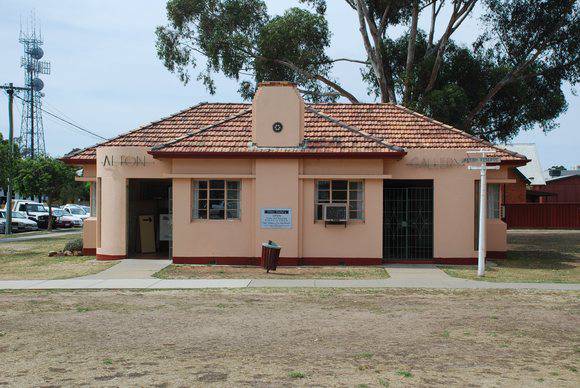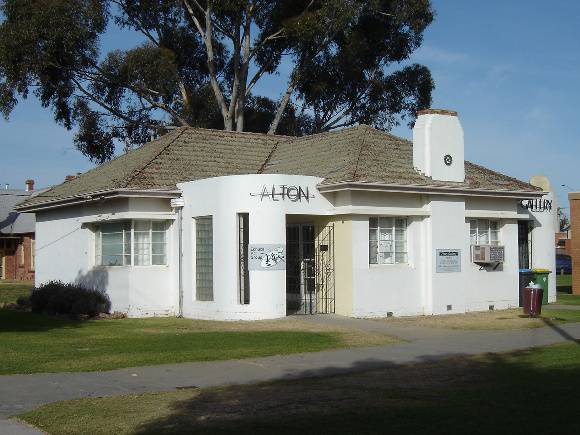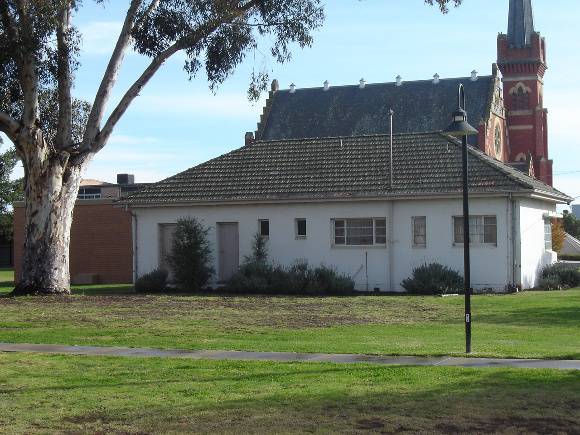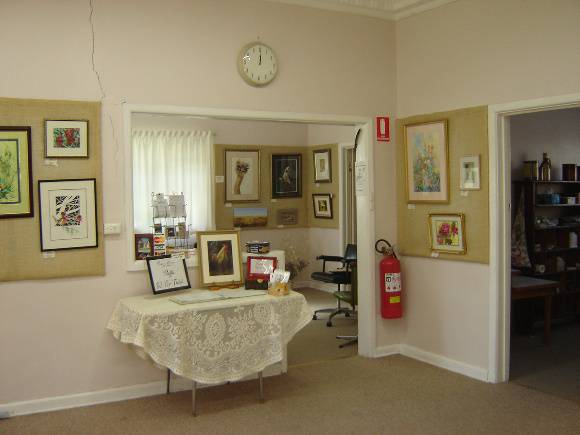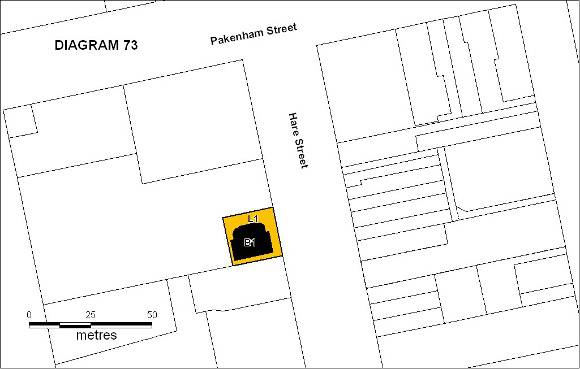| Back to search results » | Back to search page » |
|
FORMER BABY HEALTH CARE CENTRE
Other NamesINFANT WELFARE CENTRE , ALTON GALLERY Location109 HARE STREET ECHUCA, CAMPASPE SHIRE
File NumberHER/2000/000033LevelRegistered |
|
Statement of Significance
What is significant? The first Baby Health Centre in Echuca was conducted from two small rooms in the Town Hall between 1925 and 1950. By 1947 the rooms were insufficient for the needs of the service. In the following year, despite severe post-war labour and material shortages, the Committee of the Baby Health Centre embarked on a fund-raising campaign for a new building, supported by the Echuca Rotary Club. The council provided land on Alton Reserve situated at the end of the commercial centre of the town, but provided no funding for the building. The committee took advantage of the newly introduced State Government construction subsidy of £1000 and the building was eventually completed by voluntary labour, donated materials and funds from individuals and local businesses and organisations. The building, opened by Dr. A. E. (Betty) Wilmot, Acting Director of the Maternal and Child Hygiene Section of the Health Department on 30 September 1950, is one of the first centres to be completed in country Victoria after World War Two. The architect for the building is unknown. In plan form the domestic-scale building is symmetrically arranged with double door entrances accessed by porches on either side of a central, projecting waiting room. The entrances and pram porches were specifically designed to provide easy pram access, as well as space for pram parking. Other rooms include the consulting suite, as well as a utility room, kitchen, toilet, tools and wood room. Domestic in scale and design, the centre resembles a house typical of the austere period after the Second World War. The style can be described as Post-war Functionalist or Post-war Austere. The hipped roof is tiled, the brick fabric is rendered (now painted white), and the windows metal framed. The porches are semi-circular, with sections of glass bricks and double wrought iron gates at their entry. The large wrought iron lettering mounted on the render above each entry originally read "HEALTH", the other "CENTRE". A Rotary logo is located at the top part of the chimney. The building is owned by the Campaspe Shire Council and is still in community use as a gallery. How is it significant? Why is it significant? The former Echuca Baby Health Centre is of architectural significance for its consideration of the functional needs required of a baby health centre which have been successfully integrated into the design of a domestic house. The building is an extraordinary example of a building predominantly constructed by voluntary labour and completed in spite of post-war shortages. The former Echuca Baby Health Centre is of social and cultural significance for its enduring civic value to the community. The centre symbolises the combined initiatives of local women and community organisations and individuals, and is symbolic of a culturally progressive caring society, a place associated with new scientific ideas and programs designed to improve the health education of women raising families often in very difficult rural conditions. The building has a strong sense of attachment for the generations of women and children for whom it was their primary meeting place in the town.
The health of mothers and infants became of increasing concern in the first decades of the twentieth century. The early baby health movement was driven by committed volunteers frustrated at government inaction. Dr Isabella Younger Ross (1887-1956) who had studied infant health in England helped set up Victoria's first baby health clinic in Richmond in 1917. By 1918 the voluntary Victorian Baby Health Centres Association (VBHCA) was formed to oversee the growing number of centres. Financial support also came from local councils and in 1926 the State government formed the Infant Welfare Section of the Public Health Department and appointed Dr Vera Scantlebury Brown as the first Director.
The former Echuca Baby Health Care Centre is of historical, architectural and social importance to the State of Victoria.
The former Echuca Baby Health Centre is of historical significance for its associations with the baby health movement in rural Victoria. The building epitomises the enthusiasm and importance of the baby health movement in a country community. As one of the first baby health centre buildings to be completed in country Victoria after World War Two and one of the first to utilise the State Government construction subsidy, its existence is symbolic of the determination of the local community and the strength of the baby health care movement in Victoria. The centre has further historical significance for its associations with the strong Australian culture of volunteerism, owing its existence to the very determined efforts of its committee, the Rotary Club and various local citizens and organisations. The building is representative of the purpose-built centres which appeared from around 1926 and which proliferated in the post-war, baby-boom period. Homely in scale and appearance, the centres demonstrated a philosophical association with domestic housing design, both places traditionally perceived as the domain of women and children.
Group
Health Services
Category
Infant Welfare Centre


